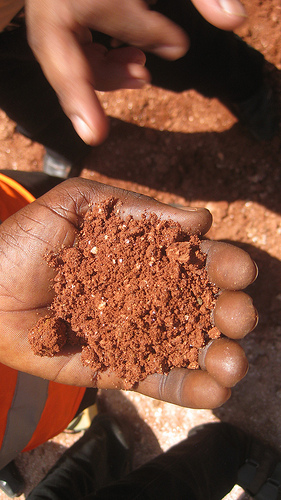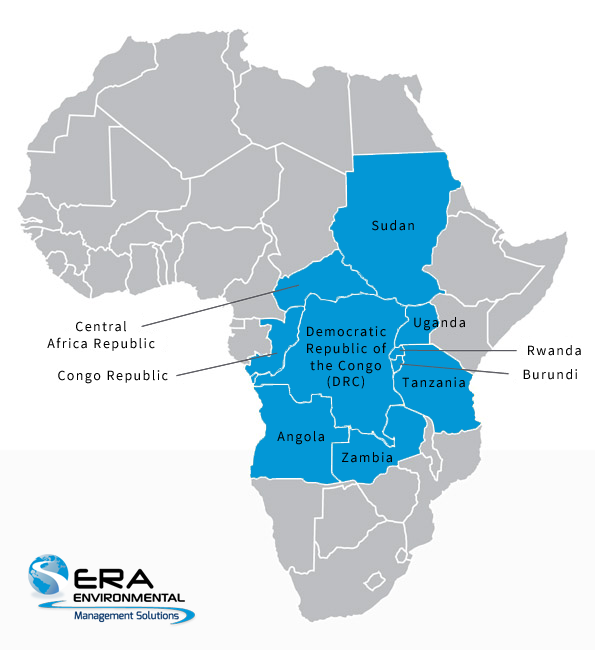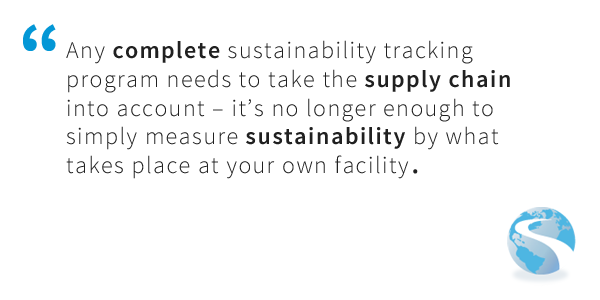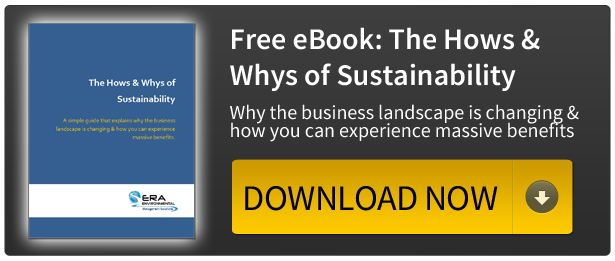
When resource and purchasing officers are seeking to streamline their manufacturing processes or reduce expenses, the supply chain is often one of the first places they turn to.
The techniques used by these supply chain professionals are only starting to be implemented by environmental & sustainability managers to make an impact in reducing their company’s environmental footprint.
2013 is looking to be the year that sustainability specialists discovered that supply chain management is probably the most efficient and cost-effective methods for improving their Triple Bottom Line.
Following Your Supply Chain Down the Rabbit Hole
Recent regulatory changes in the U.S. regarding supply chain management, namely Conflict Mineral reporting, have highlighted how your suppliers are one of the most important elements of your sustainability program. Sustainability officers are paying particular attention to how proper data collection practices throughout the supply chain can be used not only for assessing minerals, but for so much more, which we’ll get to in a bit…
Conflict Minerals are defined by the Securities and Exchange Commission (SEC) as all cassiterite, columbite-tantalite (also known as coltan), gold, wolframite, their derivatives, or any other mineral and/or derivative determined by the Secretary of State to be financing conflict in Covered Countries.
Essentially, the use of these minerals, when sourced from “Covered Countries” – famously, the Democratic Republic of Congo (DRC) and other unstable African countries – is a peak concern because their use could directly or indirectly support human right violations and finance violent military actions. Having this type of supplier in your supply chain, no matter how many tiers separate you, is the antithesis of being a sustainable manufacturer.
However, not all gold, wolframite, cassiterite, or columbite-tantalite can be classified as a Conflict Mineral. In fact, many companies ethically source these minerals and avoid the complications of Conflict Minerals by doing due diligence on their supply chains and finding vendors that do not extract these minerals from the DRC. The SEC also classifies any of these minerals that are collected from scrap or recycled sources to be non-conflict, since at that point in the supply chain their sale or use is unlikely to financially contribute to an armed conflict.

In addition, the SEC considers any instance of these minerals, that has been smelted or refined and kept outside any Covered Country, to be “outside the supply chain." In this state they are unlikely to have financially contributed to any human right violations.
Recently we wrote about how supply chain assessments and proactive management of your suppliers is the most effective way of managing your overall sustainability. What this requires is working closely with your vendors, and actively choosing to work with those that also do their own due diligence with their own suppliers. In regards to Conflict Minerals, you should seek out suppliers that are able to confidently inform you if they use conflict-free minerals.
However, Conflict Minerals are just the tip of the iceberg when it comes to your sustainability tracking throughout your supply chain. In the same way you expect vendors to know where they got their minerals, you should also expect them to be able to account for any toxicity in their goods and to be on top of any health risks associated with their product’s use.
In short, a sustainable business is built on a supply chain that shares information across its entire length. This is exceptionally important for larger OEMs, as drilling down to the primary source of your components can be nigh-impossible when there are several degrees of separation. Despite this difficulty, as the chain link with the most authority, the ability to elicit change and improvement falls squarely onto you.
Current Regulations Regarding Conflict Minerals
The SEC is responsible for overseeing the due diligence about & reporting for Conflict Minerals. Currently, the SEC requires all companies that file reports under Section 13(a) or Section 15(d) of the Exchange Act, including domestic companies, foreign private issuers, and smaller reporting companies, to report if they use Conflict Minerals.
The final SEC ruling [pdf] came into effect January 1, 2013, and the first reporting deadline is May 31, 2014. That gives businesses all year to determine if they presently use Conflict Minerals, and 150 days after year end to complete and submit the report.
The report is filed on the new SEC Form SD, and covers the duration of the entire previous calendar year, regardless of the reporter’s fiscal year end. This report is an annual report, meaning that in May 2015, businesses will report their 2014 mineral use, and so forth.
If you need to report, your responsibility is to perform a due diligence investigation on your supply chain and minerals to determine unequivocally if your minerals are Conflict or conflict-free. This due diligence process is not heavily regulated, however there are some stipulations.
Whichever process you use in your supply chain assessments, it must comply with either nationally or internationally recognized standards. You cannot simply invent a personal due diligence protocol and use it for SEC reporting. As part of compliance with this ruling, your due diligence will need to be audited by a private sector auditor who can sign off that you have undertaken every reasonable action needed in your supply chain management for assessing mineral status.
One of the due diligence frameworks gaining the most popularity among manufacturers is the OECD Due Diligence Guidance for Responsible Supply Chains of Minerals from Conflict-Affected and High-Risk Areas framework. It is quickly becoming the standard, as it offers a sound methodology for mineral sustainability tracking throughout any type of supply chain. Some of the protocols contained within the OECD guidelines include important takeaways such as:
- Adopt a company policy for the supply chain of minerals and clearly communicate it to suppliers and the public.
- Structure internal management to support supply chain due diligence.
- Establish a system of controls and transparency over the mineral supply chain. This includes a chain of custody or a traceability system or the identification of upstream actors in the supply chain.
- Strengthen company involvement with suppliers. A supply-chain policy should be incorporated into contracts and/or agreements.
While these OECD strategies are vital for assessing the status of your minerals, they are also proven building blocks for any sustainability program, in any industry. For example, ERA helps its OEM partners in the automotive industry track the potential toxicity of components that wind up in their final products throughout the supply chain as part of their sustainability planning. This type of sustainability tracking allows for far greater control of your reportable emissions and helps businesses to make smarter purchasing decisions.
Complying with Conflict Mineral Reporting
It should be noted that although the OECD guidance on due diligence and best practices is useful for managing your mineral supply chain, its suggested reporting procedures and strategies do not stand in for compliance with SEC regulations. While implementing OECD reporting practices for your own business will likely yield positive results overall, you will need to complete the SEC’s own reporting protocols regardless.
The SEC has attempted to make this initial transition period as easy as possible for reporters by creating a temporary reportable category for minerals: “DRC conflict undeterminable”. This label can be reported for all minerals that complete due diligence on their supply chains and mineral use and are unable to determine if they are Conflict or conflict-free. As a temporary solution, all large reporters will have a two year grace period to use this category, and all smaller reporters will have four years in total. In essence, it provides time for businesses to make the changes necessary in their supply chains so that they can definitely state their status, while still requiring you to perform due diligence.

In addition, any Conflict Minerals “outside the supply chain” prior to January 31, 2013 are excluded from Form SD reporting. This will reduce the implementation cost of the regulation and will protect American suppliers with existing stockpiles of potentially Conflict-sourced minerals from being forced to dispose of their goods. This is a sign that the SEC clearly does not want to punish those who may not have been aware of the potential ethical or regulatory complications prior to the final ruling.
Any regulated minerals sourced from recycled or scrap sources will not require a private sector audit if the business can state with certainty these materials did not come from any other source. You will still need to conduct your due diligence prior to reporting, but this is a much simpler and less expensive task if all your minerals are from recycled sources. However, if you are at all unsure, or only a certain proportion of your minerals are from scrap/recycled sources, you will need to undergo an audit as well.
Key Takeaways
Conflict Mineral reporting illustrates that supply chain management can be used for more than logistics and purchasing. By tapping into the flow of information across your supply chain, you have the potential to account for your entire Triple Bottom Line, including embedded energy use and carbon footprint, and tracking the human rights background of any material coming into your facility.
These new regulations also underscore the challenges associated with supply chain management. In particular, it highlights how collecting data from each tier of your supply chain gets more complex the further along the supply chain you look. This information loss and opacity put your facility at risk, not only for using Conflict Minerals or other banned substances, but also because it holds you accountable for your suppliers' actions that you had no information about. It takes every supply chain link working together towards transparency to be confident about your own product. And as the Conflict Minerals reporting protocol demonstrates, it will likely take pressure from the top to achieve this level of transparency.
Just as the SEC put pressure on American supply chains to report their Conflict Mineral use, it’s time for you to push your supply chain to prioritize and share the sustainability data that affects your business.
Resources
Online version of SEC final ruling regarding Conflict Minerals [PDF]: http://www.sec.gov/rules/final/2012/34-67716.pdfOnline version of OECD Framework [PDF]: http://www.oecd.org/daf/internationalinvestment/guidelinesformultinationalenterprises/GuidanceEdition2.pdfSources & Useful Links
OECD Guidelines: OECD (2011), OECD Due Diligence Guidance for Responsible Supply Chains of Minerals from Conflict-Affected and High-Risk Areas: Second Edition, OECD Publishing. http://www.oecd-ilibrary.org/governance/oecd-due-diligence-guidance-for-responsible-supply-chains-of-minerals-from-conflict-affected-and-high-risk-areas_9789264185050-en (for purchase only)http://www.oecd.org/daf/internationalinvestment/guidelinesformultinationalenterprises/mining.htmhttp://www.forbes.com/sites/erikamorphy/2012/08/22/apple-others-come-out-winners-in-secs-conflict-minerals-decision/http://www.bloomberg.com/news/2012-10-22/sec-sued-over-conflict-minerals-rule-by-business-groups.htmlThis blog was co-authored by:


Tags:
Sustainability
March 18, 2013


Comments